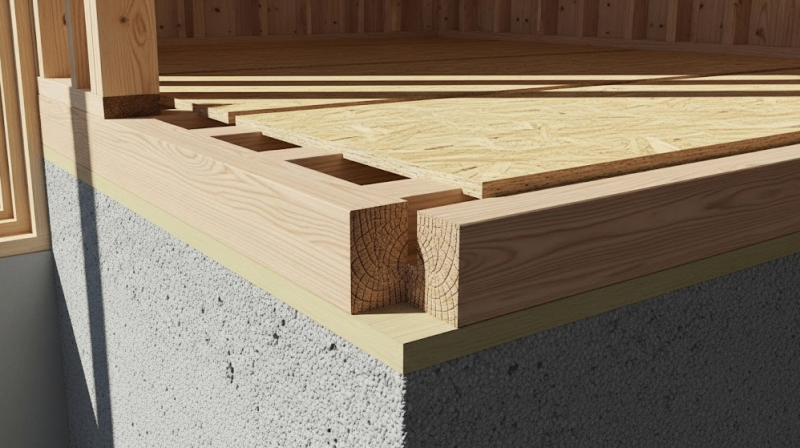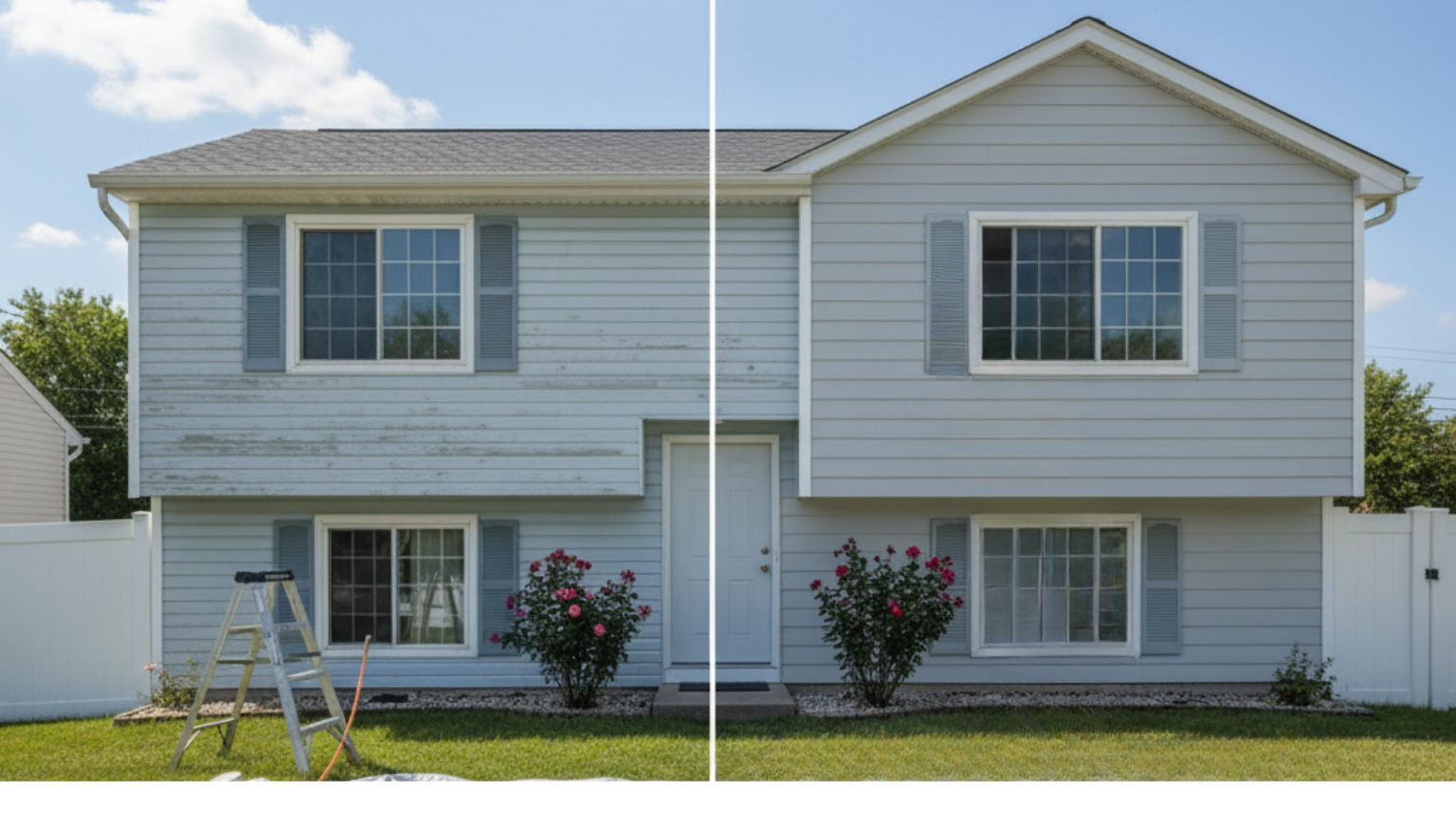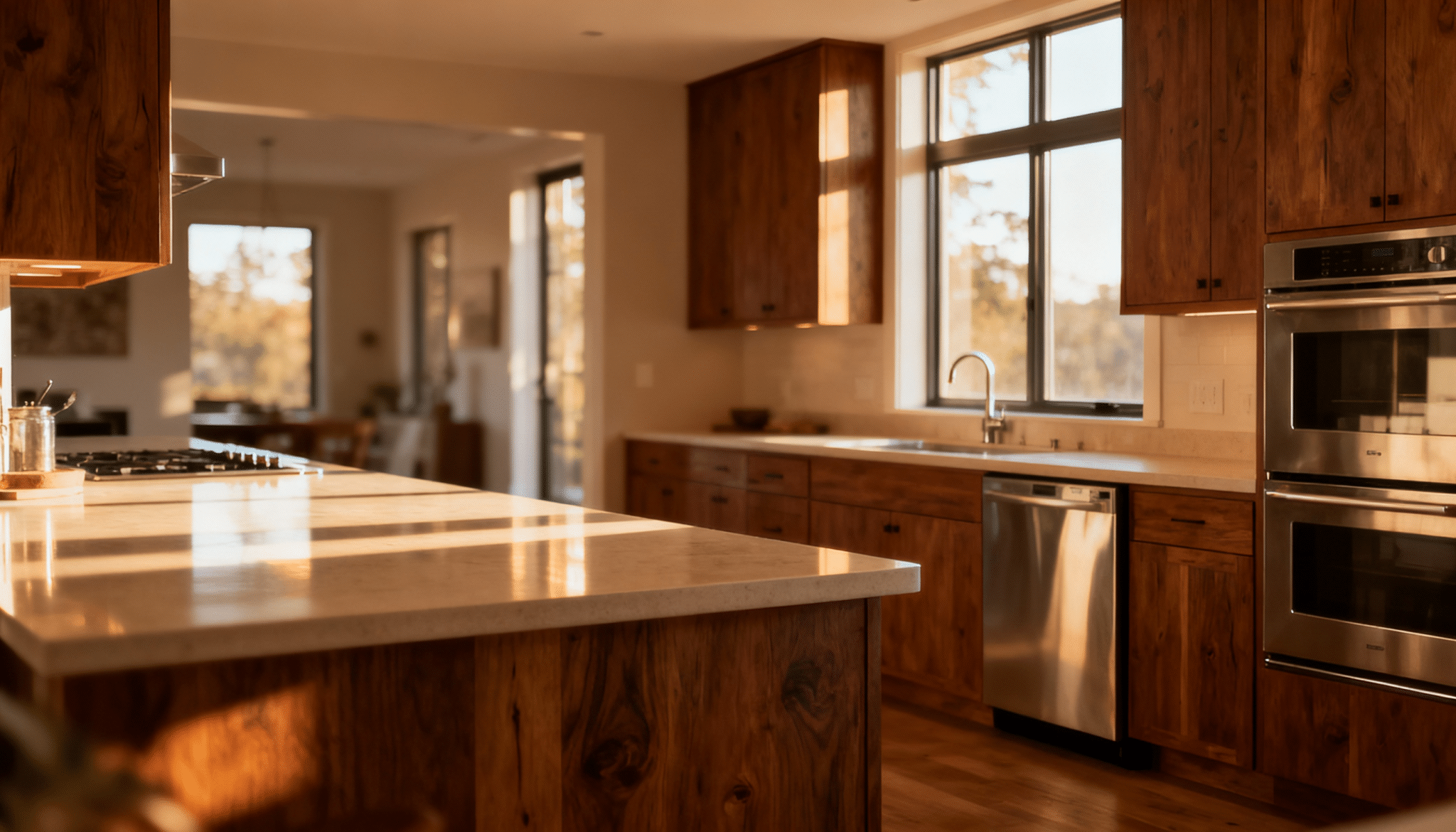Have you ever wondered about those boards that sit along the edges of your floor frame? I’m talking about rim joists.
Most homeowners are unaware of their existence, but they’re working hard behind the scenes. These structural pieces might seem minor, yet they play a huge role in keeping your home stable and safe.
Understanding what is a rim joist can save you from costly repairs down the road. These boards prevent your floor from sagging and keep everything square. They also block air leaks that waste energy.
I’ll show you exactly what rim joists do and why they matter so much for your home’s structure and comfort.
Understanding What a Rim Joist Is
A rim joist is a board that runs along the outer edge of your floor frame. It sits perpendicular to your regular floor joists and caps them off at the ends.
Think of it like a bookend that holds everything in place.
You’ll find rim joists on every level of your home that has a wooden floor system. They create a solid boundary around the entire floor frame. These boards are typically the same size as your floor joists – usually 2×8, 2×10, or 2×12 inches.
When people ask me what is a rim joist, I tell them it’s like the frame around a picture.
It keeps everything neat and contained. The rim joist connects to the sill plate below and supports the wall above. Without it, your floor joists would have no end support and could shift or twist over time.
The Role of Rim Joists in Home Construction
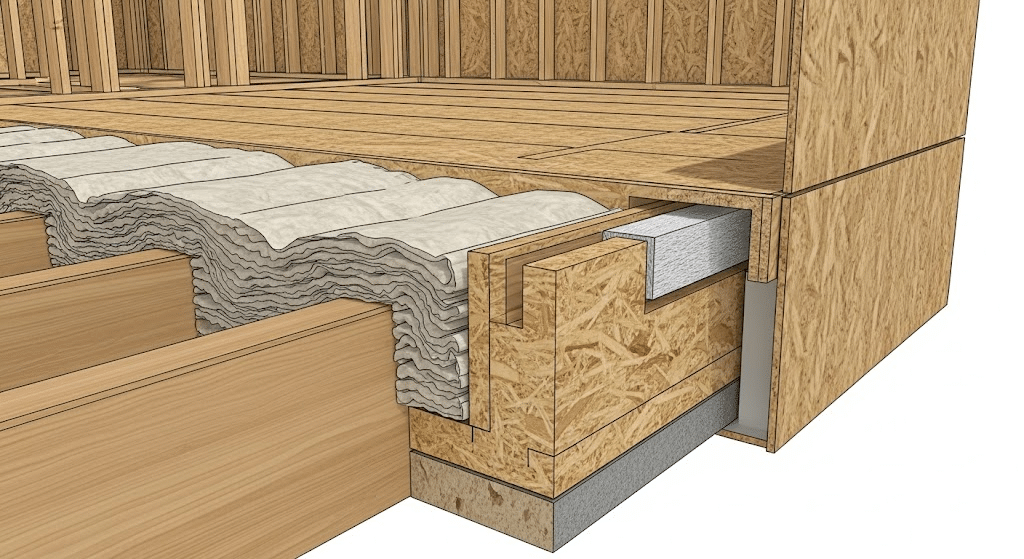
Rim joists serve multiple critical functions in your home’s construction. They’re not just there to fill space – they’re working components that keep your house structurally sound and energy efficient.
Key Functions of Rim Joists:
- Structural Support – They transfer loads from walls above down to the foundation below
- Floor Joist Stabilization – They prevent floor joists from rolling or twisting under weight
- Air Sealing – They block gaps that would otherwise let outside air into your home
- Fire Blocking – They create barriers that slow the spread of fire between floors
- Pest Control – They seal entry points where insects and rodents might enter
Importance of A Rim Joist During Construction
Rim joists are essential components that builders install during the framing stage. They provide the foundation for a stable, energy-efficient home. Without proper rim joists, your entire floor system would lack the structural integrity needed to support loads safely.
During construction, rim joists create the perimeter framework that ties everything together. They give floor joists lateral support and prevent them from buckling under weight.
This becomes critical when workers are walking on the subfloor and installing heavy materials like drywall or tile.
Builders also rely on rim joists to create proper air barriers. They seal the gaps between floors and exterior walls, which is crucial for meeting modern energy codes.
The rim joist provides a solid base for insulation and vapor barriers, too.
Fact: A properly installed rim joist system can reduce air infiltration by up to 40% compared to poorly sealed floor edges.
Signs of Rim Joist Problems
When rim joists start failing, they send clear warning signals. Knowing what is a rim joist and recognizing these problems early can save you from major structural issues and expensive repairs.
Sagging or Bouncy Floors
Your floors should feel solid when you walk on them. If you notice sagging areas or floors that bounce with each step, your rim joists might be compromised. This happens when moisture weakens the wood or when the rim joist loses its connection to other structural elements.
The floor joists lose their end support and start to deflect under weight.
Visible Gaps or Cracks
Look for gaps between the rim joist and the sill plate or subfloor. These openings often appear when the wood shrinks due to moisture changes or age.
You might also see cracks running along the rim joist itself. These gaps allow cold air, moisture, and pests to enter, reducing your home’s energy efficiency.
Water Damage or Rot
Check for dark stains, soft spots, or actual rot in the rim joist area. This usually happens in basements, crawl spaces, or areas with poor ventilation.
Water damage weakens the wood and can spread to other structural components if not addressed quickly. You might also notice a musty smell or see mold growth around damaged rim joists, which indicates ongoing moisture problems.
Energy Loss and Drafts
If you feel cold drafts near exterior walls or notice higher energy bills, damaged rim joists could be the culprit. Gaps and cracks in this area create major air leaks that force your heating and cooling systems to work harder.
These air leaks can account for up to 15% of your home’s total energy loss, making proper rim joist sealing essential for comfort and savings.
Preventive Maintenance for Rim Joists
Regular maintenance keeps your rim joists in good shape and prevents costly problems. Simple checks and basic upkeep can extend their life and maintain your home’s structural integrity.
- Inspect rim joists twice a year for signs of moisture, cracks, or pest damage, especially in basements and crawl spaces
- Keep gutters clean and ensure proper drainage away from your foundation to prevent water from reaching the rim joists
- Maintain adequate ventilation in basements and crawl spaces to control humidity levels and prevent condensation
- Seal any gaps or cracks you find with appropriate caulk or foam to maintain energy efficiency
- Check that the insulation around rim joists stays dry and properly positioned without blocking ventilation
- Remove any debris, leaves, or vegetation that might trap moisture against the rim joist area
- Monitor for pest activity, like carpenter ants or termites, that target wooden structural components
- Have a professional inspection done every few years to catch problems you might miss
When to Ask for Professional Help
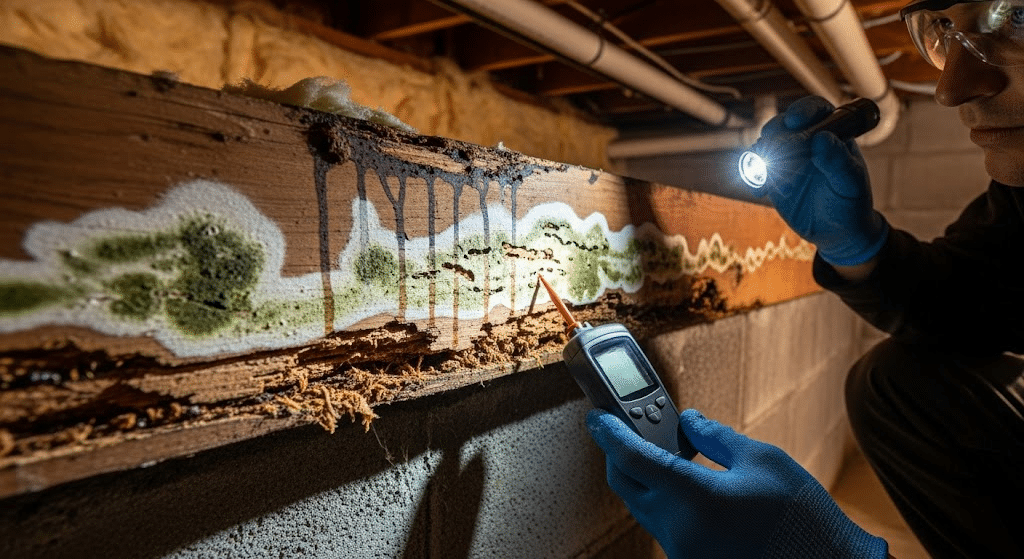
Some rim joist issues are beyond DIY fixes and require expert attention. If you’re unsure about what is a rim joist problem is or how serious it might be, it’s better to call a professional than risk your home’s safety.
1. Severe sagging floors: Contact a structural engineer immediately if floors sag more than an inch or feel bouncy when you walk. This indicates major structural damage that could worsen quickly.
Professional assessment can determine if the rim joist needs replacement or if additional support beams are required to restore structural integrity.
2. Extensive water damage or rot: When you find soft, spongy wood or large areas of discoloration, professional repair is essential.
Rotted rim joists lose their load-bearing capacity and need proper replacement. Contractors have the right tools to safely remove damaged sections and install new lumber while maintaining your home’s structural stability throughout the process.
3. Multiple rim joists affected: If problems span several rim joists or entire sections, this suggests bigger issues like foundation problems or systematic moisture intrusion that require professional diagnosis.
Multiple failures often indicate underlying causes that need to be addressed before repairs can be effective and lasting.
4. Foundation settlement: Cracks in walls, sticking doors, or gaps around windows often indicate foundation movement affecting rim joists.
Only professionals can assess and fix these complex structural issues safely. Foundation problems require specialized equipment and expertise that go beyond basic carpentry skills.
5. Pest infestations: When you find termite damage, carpenter ant activity, or other wood-destroying insects in rim joists, call pest control and structural professionals immediately.
Professional treatment requires both pest elimination and structural repair to prevent future damage.
Wrapping It Up
Rim joists might seem like simple boards, but they’re the unsung heroes of your home’s structure. They keep floors stable, seal air leaks, and protect against moisture and pests.
Regular inspections help you catch problems early before they become expensive repairs.
Now you know what is a rim joist and why it matters so much. Check yours twice a year and don’t ignore warning signs like sagging floors or drafts. When in doubt, call a professional – your home’s safety is worth it.
Have you checked your rim joists lately? Share your experience in the comments below and let me know what you found!


